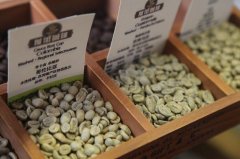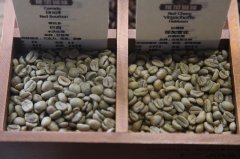Coffee classification basis and naming rules introduction of several classification methods of coffee bean classification

Professional coffee knowledge exchange more coffee bean information please follow the coffee workshop (Wechat official account cafe_style)
The latest knowledge arrangement of raw coffee beans: the classification and naming rules of coffee beans
A brief introduction to the grading of coffee beans
It is a pity that there is no unified international standard for coffee quality, but is classified by several unique coffee characteristics of each country of origin. Most grades are based on the appearance (size, uniformity, color) of coffee beans; the number of defective products in each sample; cup quality (cup quality), which also includes taste and shape, and whether coffee beans are well roasted. The types and terminology of coffee caf é s vary from country to country, and the quality criteria are only suitable for locally grown coffee, so it is not easy to really explain the quality of coffee beans without understanding the grading system of the origin.
Coffee may have exotic regional names or may be classified by process (such as washing or drying). For example, in Kenya, a bag of coffee beans may be washed "AA", plus a number representing 10 brewing quality grades.
Most Caribbean and Central American countries use grades that represent high levels: for example, the coffee trees in El Salvador are Arabica, mainly Bourbon and Pacas. The coffee is refreshing and uniform, which is divided into three grades according to altitude, namely SHG (Strictly High Grown), SG (High Grown) and SC (Central Standard). Coffee beans in Mexico are washed and divided into three grades according to their height.
Coffee7
Several classifications of bean6 coffee beans
■ market name: usually named after the export port or after the origin of the coffee farm.
■ Coffee Tree name: Arabica has always been synonymous with good coffee.
■ is named for the treatment of coffee beans: washing and drying.
■ latitude: the higher the latitude, the better the quality of the coffee.
■ defect level: such as scorched black, broken beans and immature beans, mixed with branches, stones and impurities.
■ according to the size, shape and color of beans: no matter it is grain size or flat or not, as long as it is "hard beans" is the best choice.
Coffee, very mellow, has an acidic taste.
■ is classified by the plant itself: new or old, and the classification is determined by the age of the tree.
Age of ■ coffee beans: most beans taste better after 5 to 10 years, but they can still be grown.
And in terms of.
Coffee6
World Top Coffee beans-Kenya aa Coffee beans Kenyan Coffee has 7 grades
Important Notice :
前街咖啡 FrontStreet Coffee has moved to new addredd:
FrontStreet Coffee Address: 315,Donghua East Road,GuangZhou
Tel:020 38364473
- Prev

Grading system of major coffee producing countries in the world popular science coffee grade shb and coffee bean grade G1
Professional coffee knowledge exchange more coffee bean information please follow the coffee workshop (Wechat official account cafe_style) the latest coffee raw bean knowledge collation: coffee bean grading and naming rules want to drink a certain quality of selected coffee beans, starting from understanding the grading system of coffee-producing countries is a necessary lesson for each producing area, each piece of soil, different climate, different treatment methods
- Next

What is the meaning of standard coffee bean grade G1 and coffee grade shb
Professional coffee knowledge exchange more coffee bean information please follow the coffee workshop (Wechat official account cafe_style) the latest coffee raw bean knowledge collation: coffee bean classification and naming rules common coffee bean grade classification: Grade1 (level 1): washed bean top Grade2 (level 2): washed bean standard grade Grade3 (
Related
- Beginners will see the "Coffee pull flower" guide!
- What is the difference between ice blog purified milk and ordinary milk coffee?
- Why is the Philippines the largest producer of crops in Liberia?
- For coffee extraction, should the fine powder be retained?
- How does extracted espresso fill pressed powder? How much strength does it take to press the powder?
- How to make jasmine cold extract coffee? Is the jasmine + latte good?
- Will this little toy really make the coffee taste better? How does Lily Drip affect coffee extraction?
- Will the action of slapping the filter cup also affect coffee extraction?
- What's the difference between powder-to-water ratio and powder-to-liquid ratio?
- What is the Ethiopian local species? What does it have to do with Heirloom native species?

